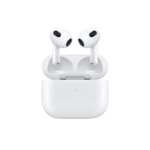Likewise, Lujan et al. demonstrated that CBD (10 and 20 mg/kg, i.p.) significantly attenuated cocaine-induced CPP. Furthermore, they employed an intravenous SA paradigm and showed that CBD (20 mg/kg, i.p.) reduced the motivation to self-administer cocaine in a fixed ratio 1 schedule, as well as the breaking point during the progressive ratio stage. Also, it is relevant to point out that the effects of CBD on hippocampal neurogenesis plays a pivotal role in the reduction of cocaine SA (Luján et al., 2019). Recently, attenuating effects of CBD on the motivational properties of cocaine were also revealed by Galaj et al.. In this study CBD inhibited cocaine SA maintained by low, but not high, doses of cocaine, and dose-dependently lowered cocaine-enhanced brain-stimulation reward.
CBD vs. THC: Chemical Structure
- Yes, CBD for pain relief is non-addictive and safe for managing everyday aches and pains.
- In contrast, higher doses (10–20 mg/kg) increased ICss thresholds, indicating that brain reward function is decreased by acute administration of CBD.
- The compound appears to suppress the growth of cancer cells and promote their destruction.
- The first pilot clinical study evaluated the effects of CBD in smokers trying to achieve cessation.
- Rather, Cannabidiol has been studied for its potential in relieving pain, reducing inflammation, and improving overall wellbeing.
While CBD oil is considered safe, some people can experience adverse effects. Additionally, CBD derived from marijuana plants with higher levels of THC can cause intoxication or could be illegal in your state. However, where CBD is produced for pharmaceutical purposes as an extract of cannabis, cannabis extracts and tinctures are included in the 1961 UN Single Convention on Narcotic Drugs. A fuller review of extracts or preparations containing almost exclusively CBD will take place in June 2018, when the WHO expert committee will undertake a comprehensive review of cannabis and cannabis related substances. There is growing interest in CBD as a therapy for various conditions, but only one product currently has FDA approval.
Other substances
- A review of preclinical and clinical data even indicates CBD’s potential in reducing addiction to substances like cocaine and opioids.
- Repeated treatment with CBD (20 mg/kg, i.p.) blunted the motor behavioral response induced by a challenge dose of cocaine plus caffeine (Prieto et al., 2020).
- Only one CBD product (Epidiolex, a medication that treats seizures) has been approved by the FDA.
- But hype aside, researchers are hard at work assessing the true value of CBD — which comes from the same plant family as marijuana but doesn’t induce a high — and the varied products it has spawned.
As such, it stands to reason that Cannabidiol is not addictive and can be used safely and responsibly. Cannabidiol (CBD) is a naturally occurring compound found in the cannabis plant. CBD is one of the many compounds found in cannabis, and it is the second-most abundant cannabinoid in the plant.
What Causes Drug Addiction?
And while heavy marijuana use can lead to dependence, current preclinical studies suggest that CBD is not an addictive substance, nor does it promote addictive behaviors in people. CBD can be derived from hemp or marijuana, while THC only comes from marijuana cannabis plants. While CBD and THC cannabinoids are present in both the hemp flower and marijuana plant matter, hemp tends to have more CBD and a less potent level of THC. This results in more minor psychoactive effects and more therapeutic, medicinal benefits. Most addiction-causing drugs specifically target the brain’s dopamine reward system. Because CBD oil, or hemp oil, is made from high-CBD, low-THC hemp, it is non-addictive and has no addictive qualities.
Research has found, for example, that as many as 70% of CBD products are mislabeled and contain significantly more THC than labels suggest. Because of the lack of regulation of these products, it isn’t easy to know exactly how much THC you is cannabidiol addictive are actually getting. There is no way to tell between THC and CBD based on appearance, smell, taste, or texture. Purchasing products from reputable manufacturers and retailers may help ensure that you are getting the type of product you want.
- The plasma concentration of CBD also correlated with right subicular complex and total right HIP growth in heavy users (Beale et al., 2018) (Table 2).
- Individuals should consult with healthcare professionals for personalized advice, particularly if they have a history of substance abuse or underlying health conditions.
- Regarding METH abuse, CBD administration during the extinction period (80 mg/kg; IP) (Hay et al., 2018) or at the time of the reinstatement (10 μg/5 μL; ICV) inhibited reinstatement of METH-induced CPP (Karimi-Haghighi and Haghparast, 2018) (Table 1).
Cannabidiol (CBD), a non-intoxicating component of cannabis, has been studied for its potential therapeutic effects on various addictive behaviors. Research indicates that CBD may modulate neuronal circuits involved in addiction, suggesting its potential as a treatment for substance use disorders. Preclinical studies have shown that CBD might have therapeutic properties for opioid, cocaine, and psychostimulant addiction, and preliminary human studies suggest benefits for cannabis and tobacco addiction. CBD has been shown to be a safe compound in both animals and humans, which is of critical importance from a therapeutic point of view. Another potential mechanism by which CBD could exert its effects on substances of abuse is by modulating their pharmacokinetic properties.
What Does Research Say About CBD and Addiction?
THC alone or combined with CBD, but not CBD alone, significantly inhibited the expression of sensitization to ethanol in this paradigm (Filev et al., 2017). Cannabis sativa plant contains numerous chemical entities including cannabinoids, terpenes, and phenolic compounds (Andre et al., 2016). To date, over 120 cannabinoids have been isolated from the plant (Morales et al., 2017). From these, delta-9-tetrahydrocannabinol (THC) is the main psychotomimetic or hallucinogenic component and the first cannabinoid to be identified and studied. First described and synthesized by Roger Adams in 1942 (Adams, 1942), and then isolated for the first time by Gaoni and Mechoulam in 1964 (Gaoni and Mechoulam, 1964), THC mediates the rewarding properties of cannabis (Zhang et al., 2004). Along with THC, cannabidiol (CBD) is the other most abundant phytocannabinoid in the Cannabis sativa plant.















